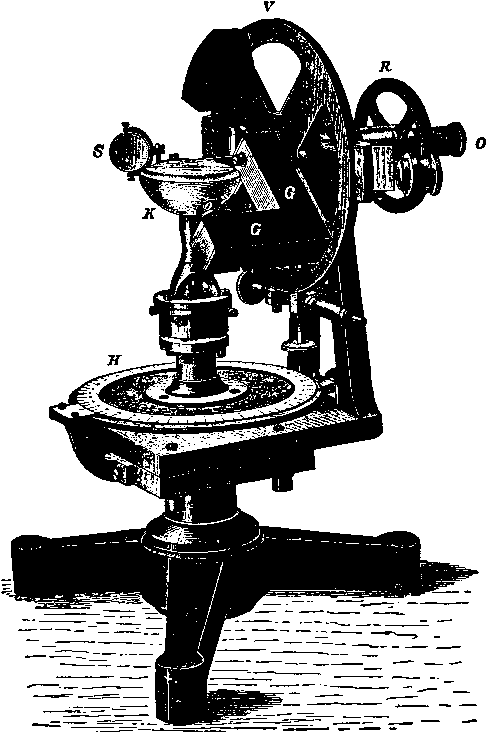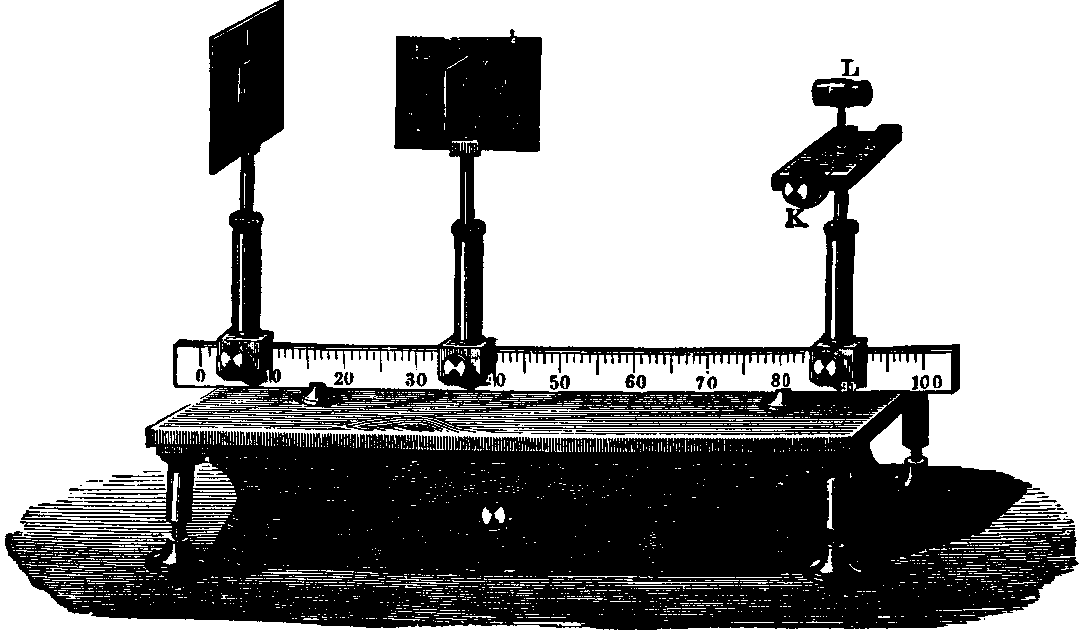
Pulfrich, C. Die Stereoskopie im Dienste der isochromen und heterochromen
Photometrie. Die Naturwissenschaften, 1922, 10:
| June - September issues (German language bitmap files, below): | |
| Part I = | Heft 25, pp. 553 - 564; |
| Part II = | Heft 26, pp. 569 - 574; |
| Part III = | Heft 27, pp. 596 - 601; |
| Part IV = | Heft 33, pp. 714 - 722; |
| Part V = | Heft 34, pp. 735 - 743; |
| Part VI = | Heft 35, pp. 751 - 761; |
The copyright for this series of 1922 journal articles has expired, and the journal itself is not easily available any more. The posted bitmap copies were scanned from photocopies originally supplied by the University of Michigan.
Entitled "Applications of Stereoscopy in Isochromatic and Heterochromatic Photometry", this series of six articles was the first to publish what soon would be called Pulfrich's binocular illusion. The articles advertise Pulfrich's wares, as it were, as well as teach the reader about the theory and literature of Pulfrich's latest device, a stereoscopic spectrophotometer.
Carl Pulfrich of Jena was a prominent German physicist, and he describes in Part I how his assistant Fertsch first suggested visual delay as the now-accepted explanation of this depth illusion.

Pulfrich was a very successful instrument
inventor; a refractometer designed by him still is in use.
Visitors who followed the popular Pathfinder-Sojourner robotic exploration of
Mars in 1996 may recall that much of the rock analysis was carried out by color
separation and spectral analysis of light reflected from the Martian rocks and
other features.
This is the kind of analysis performed by the spectrophotometer invented by
Pulfrich and described in detail by him in the final three Parts of the
series: His stereo spectrophotometer presents a sample to one eye and
a known standard to the other. The device thus will allow the user to see
the ellipse of the Pulfrich Effect except when the spectral sample matches
[the luminance of] a standard spectral light.
Although Pulfrich's results in this series of papers are preliminary, he
expresses hope that his invention will become useful in physics, physical
chemistry, and perhaps physiological optics.
A short summary of Pulfrich's discovery and some biographical information is available elsewhere. Photometry by the Pulfrich Effect has been shown not to be as useful as other methods, as reviewed briefly by Lit and Hyman (1951).
The articles posted have been given Part numbers and descriptive titles not actually used by Pulfrich. Separate abstracts were not available in the original work. The original work was divided into sections the numbering of which is used in the download links below.
The articles all were scanned in TIFF format at 400 dpi. Some of the figures representing engravings or photographs of instruments were scanned at 1200 dpi and have been posted here separately. For best results, the figures representing instruments should be viewed as bitmaps with a high-quality TIFF viewer which despeckles and displays half-tones (e. g., the freeware Ulead PhotoImpact Viewer elsewhere at this site). Adobe Acrobat 3 will display halftone for the 400 dpi images in the PDF documents.
The entire series is posted in bitmap-image file format. Made from faded photocopies, the scanned bitmaps have been cleaned up minimally by removing speckles from open areas where the document content would not be affected. Some stretches of illegible text have been corrected manually and are indicated by freehand encirclements on the bitmap postings. An original library copy should be consulted for authoritative reference. We cannot guarantee the accuracy of any change or correction made.
Libraries said to have copies of Die Naturwissenschaften back to 1922 include the University of Michigan, Norris Medical Library (University of Southern California), and the University of Oregon (call number QC1 S797).
Back to Pulfrich Effect Home. University Privacy Policy
The Pulfrich Effect, SIU-C. Last updated 2009-04-11